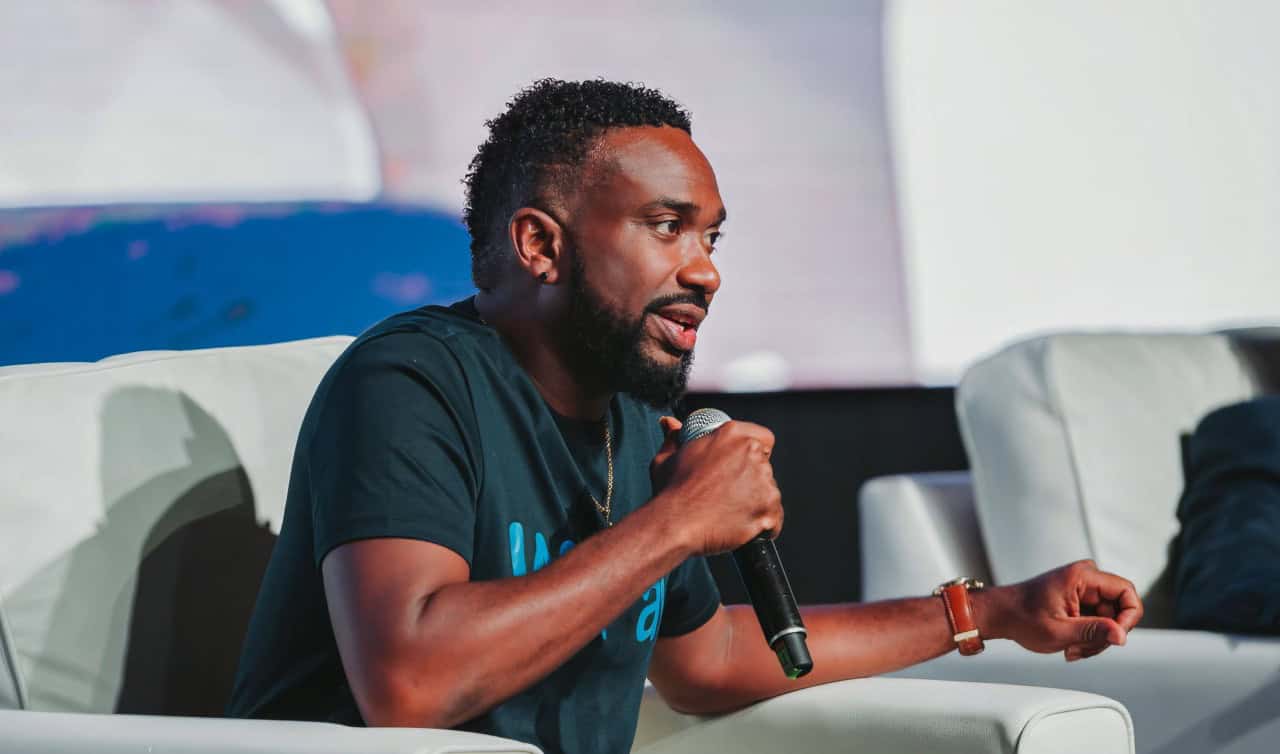
Above: Illustration by denisismagilov/DepositPhotos
BitDepth#1469 for July 29. 2024
On July 02, on the second day of AmCham’s 2024 edition of its Tech Hub Islands Summit, six business leaders discussed “Getting Digital-Ready: Leadership lessons to future-proof the digital workplace.”
Pennelope Beckles-Robinson, Minister of Planning and Development warned that any strategy for digital transformation should be informed by the experiences of students who simply could not connect during covid lockdowns
“So many of us can’t really live without a phone, and we can’t live without digital and we assume that it’s business as usual for everybody when that’s not the case. I think that’s very important when we talk about being digitally ready.”
Beckles-Robinson then proceeded to list the many impressive digital transformation projects undertaken by the government, though she did not elaborate on how these systems were being used by their intended audience and since some projects are not complete, when they would be completed.
Devindra Ramnarine of the Digital Transformation Ministry previously announced the Arima Connect project in 2021 and the only announcements have been about the installation of trunking in 2024. A formal request for information about the project put to the IDB has yielded no results.
TTConnect, which never met its ambitious launch targets, summarily collapsed last year and has not been adequately replaced or improved since.
But the Planning Minister is forward looking and accommodating on the issue of the people who must drive digital transformation in government.
“We can’t just say people are too old, or it’s too difficult for people to learn. We should never take that position. You do your analysis, you profile your staff, their educational abilities, their understanding of the digital platform.”
Some people are at home, and they’re doing their own experimenting. Their children are helping them. So if we give people the opportunity, we’ll be surprised.”
Preparing people for digital transformation change proved a recurring theme of the discussion.
“It’s less about the actual technology that we implement and more about how we are preparing our teams to adopt it.” said Richard Shepherd, managing director of Proman.
“We are seeing the change in the workforce. They are coming into the workforce now and saying they are frustrated by the way that we’re doing things. They’re pushing on that door and saying, why aren’t we doing this a different way?”
“You have an agenda for what you want to transform, but you must be open to understanding where ideas are coming from and finding a way to capture not just their ambition, but their positive energy towards it.”
“Much of the of the value that comes from digital transformation is in how it’s adopted. If people in your organisation are coming to you, telling you we need to change these things, you really should listen and spend more time understanding how you can incorporate what they are bringing to your organisation.”
Maria Chong Ton, CEO of Eve Anderson Recruitment endorsed Shepherd’s insights.
“People come into the workplace and they want to work,” Chong Ton said, “they want to function”.
“We really have to foster a culture of continuous learning and up-skilling. Many graduates come out of school and they say, but this is not what we learned. They go into the companies and everything is 20 years behind what they learned.”
“We really need to provide the technology platform, give them the tools that they need. Encourage certification. Even if you have to fund it. I know many companies are doing in-house training. Look for mentors, do cross-training.”
Exim Bank’s Navin Dookeran explained that strategic and relevant training enjoys its own uptake.
“We made a commercial credit underwriting course optional for all our staff, not just the people who do that job,” Dookeran said.
“People in finance, marketing and so on. The course is one hour of videos broken up into five-minute videos that give you an awareness of that job. We had over 75 per cent of our staff voluntarily signing up because they did not see it as onerous and it was asynchronous.”
Raj Ramdass, CEO of RSC International suggested that embracing technology begins with the personal.
“As an organisation [encouraging individuals to] build human development in their own digital space, what will be transferred into the work environment. What if you could have a peer-to-peer support system?”
“Your own human development sandbox within your organisation that’s going to make it risk cheap [to experiment] and where they can find their own digital way forward, make their own mistakes within their own personal life, and then all of a sudden you can have a digital environment. This is not taking away from the fact that you must have training specific to your process and your needs.”
So how do leaders marshal this type of engagement by their teams behind digital transformation?
Richard Shepherd was cautiously sanguine about the reality.
“Digital transformation is hard. I don’t think we always appreciate just how difficult it is. It’s disruptive, it’s expensive. I’ve seen success rates ranging between eight and twenty per cent. So low probability of success, very high cost, very disruptive to your organisation.”
“[Digital transformation must be driven by] someone in your business that has a strategic overview of the company, someone that has the ability to navigate the political situations because when you’re implementing a project, it crosses departments.”
“You need that leader, you need that sponsorship at the senior level in your organisation, someone who can articulate your ambitions from a digital perspective. They need to have the decision-making authority. But there should be governance behind them. They’re not a law onto their own unto themselves.”









































[…] Trinidad and Tobago – On July 02, on the second day of AmCham’s 2024 edition of its Tech Hub Islands Summit, six business leaders discussed “Getting Digital-Ready: Leadership lessons to future-proof the digital workplace.” … more […]